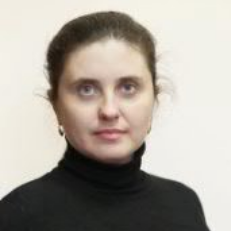International Journal of Intelligent Systems and Applications (IJISA)
IJISA Vol. 10, No. 4, 8 Apr. 2018
Cover page and Table of Contents: PDF (size: 766KB)
Time Dependence of the Output Signal Morphology for Nonlinear Oscillator Neuron Based on Van der Pol Model
Full Text (PDF, 766KB), PP.8-17
Views: 0 Downloads: 0
Author(s)
Index Terms
Nonlinear oscillator neuron, frequency modulation, morphology of the information signal, resonance effect, encoding and decoding of information
Abstract
Time-frequency and time dependence of the output signal morphology of nonlinear oscillator neuron based on Van der Pol model using analytical and numerical methods were investigated. Threshold effect neuron, when it is exposed to external non-stationary signals that vary in shape, frequency and amplitude was considered.
Cite This Paper
Vasyl Lytvyn, Victoria Vysotska, Ivan Peleshchak, Ihor Rishnyak, Roman Peleshchak, "Time Dependence of the Output Signal Morphology for Nonlinear Oscillator Neuron Based on Van der Pol Model", International Journal of Intelligent Systems and Applications(IJISA), Vol.10, No.4, pp.8-17, 2018. DOI:10.5815/ijisa.2018.04.02
Reference
[1]T. Sauer, “Reconstruction of dynamical systems from interspike intervals.” Phys. Rev. Lett., Vol. 72, pp. 3811-3814, 1994.
[2]D.M. Racicot, A. Lonytin, “Interspike interval attractors from chaotically driven neuron models.” Physic D., Vol. 104, pp. 184-204, 1997.
[3]R. Castro, T. Sauer, “Correlation dimension of attractors through inters pike intervals.” Phys. Rev. E., Vol. 55, pp. 287-290, 1997.
[4]T. Sauer, “Nonlinear Dinamics and Time Series.” Eds C. Culter and D. Kaplan, Fields Institute Communications. American Math. Society, Providence, RI, Vol. 11, pp. 63-75, 1997.
[5]R. Hegger, H. Kantz, “Embedding of sequences of time intervals.” Europhys. Lett., Vol. 38, pp. 267-272, 1997.
[6]R. Castro, T. Sauer, “Chaotic Stochastic Resonance: Noise-Enhanced Reconstruction of Attractors.” Phys. Rev. Lett., Vol. 79, pp. 1030-1033, 1997.
[7]A. Pavlov, A. Khramov, A. Koronovskyy, E. Sytnykova, V. Makarov, A. Ovchynnykov, “Veyvlet-analyz v neyrodynamyke.” Uspekhy fyzycheskykh nauk, Vol. 182(9), pp. 905-939, 2012.
[8]H.C. Tuckwell, “Introduction to Theoretical Neurobiology.” Cambridge University. Press, Cambridge, 1998.
[9]N. Janson, A. Pavlov, A. Neiman, V. Anishchenko, “Reconstruction of dynamical and geometrical properties of chaotic attractors from threshold-crossing interspike intervals.” Phys. Rev. E., Vol. 58, pp. R4-R7, 1998.
[10]A. Pavlov, O. Sosnovtseva, E. Mosekilde, V. Anishchenko, “Extracting dynamics from threshold-crossing interspike intervals: Possibilities and limitations.” Phys. Rev. E., Vol. 61, pp. 5033-5044, 2000.
[11]A. Pavlov, O. Sosnovtseva, E. Mosekilde, V. Anishchenko, “Chaotic dynamics from interspike intervals.” Phys. Rev. E., Vol. 63, pp. 036205(5), 2001.
[12]S. John, Hooshang Hemami Bay, “Modeling of a Neural Generator with Coupled Nonlinear Oscillators.” IEE Transactions biomedical engineering, V.BME, Vol. 34(4), pp. 297-306, 1987.
[13]A. Pavlov, O. Pavlova, “Prymenenye veyvlet-analyza v yssledovanyyakh struktury tochechnykh protsessov.” Pysʹma v ZHTF, Vol. 32(21), pp. 11-17, 2006.
[14]V.Y. Suhakov, “Osnovy synerhetyky.”, Kyyiv, 2001.
[15]M. Boholyubov, Y. Mytropolskyy, “Asymptotychni metody v teoriyi neliniynykh rivnyan”, M.: Nauka, 1992.
[16]S.V. Bozhokyn, “Nepreryvnoe veyvlet-preobrazovanye y tochno reshaemaya modelʹ nestatsyonarnykh syhnalov.” ZHTF, Vol. 82(7), pp. 8-13. 2012.
[17]T. Basyuk, “The main reasons of attendance falling of internet resource.”, in Proc. of the X-th Int. Conf. Computer Science and Information Technologies, CSIT’2015, pp. 91-93, 2015.
[18]E. Burov, “Complex ontology management using task models.” International Journal of Knowledge-Based and Intelligent Engineering Systems, Amsterdam: IOS Press, Vol. 18(2), pp. 111-120, 2014.
[19]V. Lytvyn, V. Vysotska, L. Chyrun, L. Chyrun, “Distance Learning Method for Modern Youth Promotion and Involvement in Independent Scientific Researches.” in Proc. of the First International Conference on Data Stream Mining & Processing, DSMP, pp. 269-274, 2016.
[20]J. Chen, D. Dosyn, V. Lytvyn, A. Sachenko, “Smart Data Integration by Goal Driven Ontology Learning.” Advances in Big Data. Advances in Intelligent Systems and Computing, Springer, pp. 283-292, 2016.
[21]V. Lytvyn, V. Vysotska, O. Veres, I. Rishnyak, H. Rishnyak, “Classification Methods of Text Documents Using Ontology Based Approach.” Advances in Intelligent Systems and Computing, Vol. 512, Springer, pp. 229-240, 2016.
[22]V. Teslyuk, V. Beregovskyi, P. Denysyuk, T. Teslyuk, A. Lozynskyi, “Development and Implementation of the Technical Accident Prevention Subsystem for the Smart Home System.” International Journal of Intelligent Systems and Applications (IJISA), Vol. 10, No. 1, pp. 1-8, 2018.
[23]Zh. Hu, Ye.V. Bodyanskiy, O.K. Tyshchenko, and V.O. Samitova,"Fuzzy Clustering Data Given in the Ordinal Scale", International Journal of Intelligent Systems and Applications (IJISA), Vol.9, No.1, pp.67-74, 2017.
[24]Zh. Hu, Ye.V. Bodyanskiy, O.K. Tyshchenko, V.O. Samitova,"Possibilistic Fuzzy Clustering for Categorical Data Arrays Based on Frequency Prototypes and Dissimilarity Measures", International Journal of Intelligent Systems and Applications (IJISA), Vol.9, No.5, pp.55-61, 2017.
[25]Zh. Hu, Ye.V. Bodyanskiy, O.K. Tyshchenko, V.M. Tkachov, “Fuzzy Clustering Data Arrays with Omitted Observations”, International Journal of Intelligent Systems and Applications (IJISA), Vol.9, No.6, pp.24-32, 2017.
[26]Zh. Hu, Ye.V. Bodyanskiy, O.K. Tyshchenko, and V.O. Samitova,"Fuzzy Clustering Data Given on the Ordinal Scale Based on Membership and Likelihood Functions Sharing", International Journal of Intelligent Systems and Applications (IJISA), Vol.9, No.2, pp.1-9, 2017.
[27]J. Su, V. Vysotska, A. Sachenko, V. Lytvyn, Y. Burov, “Information resources processing using linguistic analysis of textual content.” in Proc. of the 9th IEEE International Conference Intelligent Data Acquisition and Advanced Computing Systems: Technology and Applications (IDAACS), Bucharest, Romania, pp. 573-578, 2017.
[28]V. Lytvyn, V. Vysotska, Y. Burov, O. Veres, I. Rishnyak, “The Contextual Search Method Based on Domain Thesaurus.” Advances in Intelligent Systems and Computing, Vol. 689, Springer, pp. 310-319, 2017.
[29]V. Pasichnyk,, T.Shestakevych, “The model of data analysis of the psychophysiological survey results.” Advances in Intelligent Systems and Computing, Vol. 512, pp. 271-281, 2017.
[30]P. Zhezhnych, O.Markiv, “Linguistic Comparison Quality Evaluation of Web-Site Content with Tourism Documentation Objects” Advances in Intelligent Systems and Computing, Vol. 689, pp. 656-667, 2018.
[31]O. Bazylyk, P. Taradaha, O. Nadobko, L. Chyrun, T. Shestakevych, “The results of software complex OPTAN use for modeling and optimization of standard engineering processes of printed circuit boards manufacturing” in Proceedings of the 11th International Conference TCSET'2012, pp. 107 – 108, 2012.
[32]A. Bondariev, M. Kiselychnyk, O. Nadobko, L. Nedostup, L. Chyrun, T. Shestakevych, “The software complex development for modeling and optimizing of processes of radio-engineering equipment quality providing at the stage of manufacture” in Proceedings of the 11th International Conference TCSET'2012, pp. 159, 2012.
[33]V. Riznyk, “Multi-modular Optimum Coding Systems Based on Remarkable Geometric Properties of Space” Advances in Intelligent Systems and Computing, Vol. 512, pp. 129-148, 2017.




